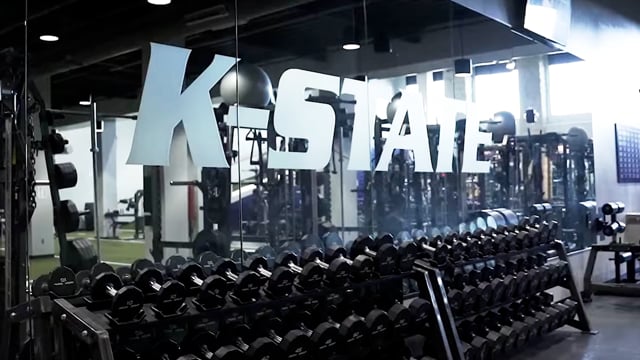Optimizing Bar Speed

One of the biggest criticisms of Velocity Based Training is that you will never move a barbell faster than you will move your body when at a full sprint. This is absolutely true. VBT is not about trying to sprint faster, it is about optimizing bar speed while training for specific traits and adaptations. Enhancing those specific traits could ultimately lead an individual to improve upon their sprinting speed, but improving sprint speed is not the sole purpose of using VBT in the weight room.
Weight room training can inform speed on the field, all the while bulletproofing tendons, ligaments, and muscles through progressive overload and periodization. In no way is VBT a replacement for true speed and sprint work as part of training or conditioning. It is simply about optimizing bar speed with objective outputs to train with specificity for a desired trait and subsequent adaptation.
FOR SOME NUMBERS
Legendary speed coach, Charlie Francis (along with plenty of other sprint coaches) has repeatedly said to get faster, you must train faster [1]. Faster for Francis means training at speed that are 90-95% of max-speed, this same principle is true for JB Morin [2-5]. In the weight room, we can replace the word “max-speed” with “max-effort.” Regardless of the trait an individual is training for, provided their effort or intentionality lies within that 90-100% range, chances of adaptation are greater.
In 2009, Usain Bolt set the World Record in the 100m with a top speed of about 12.40 m/s, in that same race, he averaged about 11 m/s over the duration of the 100m [6]. Now, the layman or perhaps just accomplished high school athlete is going to be closer to 8 m/s. In the weight room, explosive movements (with the exception of a jump squat) are hard pressed to exceed 3 m/s.
![Usain Bolt, 100m World Record holder courtesy of Richard Giles [8]](https://cdn.prod.website-files.com/662aafb2bbfc6e8c07df7082/66ec87569c6908e3a729f789_664f34c6fbee21efcf49279f_63caac80e44b7853d377e894_Usain.avif)
Will you ever be able to move a barbell faster than you sprint? No. Does that mean you shouldn’t try to optimize bar speed? Heck no! VBT gives us valuable information regarding fatigue status and readiness, it also provides immediate and objective feedback, much like timed sprints, that will inform and enhance performance in live time. The principles behind desiring to time sprints to improve foot speed are the same as providing a speed metric to a barbell. Ensuring 90-100% effort and providing a metric that backs it up allows athletes to train with precision and to the best of their ability, time and again.
GAMIFY TECHNOLOGY
Moreover, those same principles behind timing sprints and VBT help enhance performance by the simple gamification of the activity.
Gamify = To apply typical elements of game playing to an activity (e.g. point scoring, competition etc).
VBT, similar to timing sprints, helps create a competitive environment, the live outputs being the points. All of this has been shown to enhance skill acquisition [7] and ultimately yield improvements to the individual.

CONCLUSION
Velocity Based Training in a weight room will never yield numbers that rival velocities in a sprint. This is true. That, however, is not the goal of VBT. Optimizing bar speed, enhancing overall effort to acquire the trait, monitoring load, and creating strong and capable athletes in a weight room setting is the goal of VBT. True sprint speed should be acquired in a sprint training setting. Bar speed in a weight training setting.
OTHER RELEVANT POSTS!
Curious about how different populations can utilize VBT? Check out our VBT for specific populations series!
Check out our Return To Play from Covid-19 series!
Read more about Perch here! And check out Product Videos here. And our support website here.
Back to basics? Review the origins of VBT and Strength Training!
FOLLOW US!
Keep checking back for more velocity based training content, tips, tricks, and tools. And don’t forget to follow us on Twitter, Instagram and LinkedIn and like us on Facebook
SOURCES:
- Francis, C. (1997). Training for speed. Canberra, A.C.T., Australia: Faccioni Speed & Conditioning Consultants.
- Morin, J. B., & Samozino, P. (2016). Interpreting power-force-velocity profiles for individualized and specific training. International Journal of Sports Physiology and Performance.
- Samozino, P., Rejc, E., Di Prampero, P. E., Belli, A., & Morin, J. B. (2012). Optimal force-velocity profile in ballistic movements-Altius: Citius or Fortius? Medicine and Science in Sports and Exercise.
- Samozino, P., Rabita, G., Dorel, S., Slawinski, J., Peyrot, N., Saez de Villarreal, E., & Morin, J. B. (2016). A simple method for measuring power, force, velocity properties, and mechanical effectiveness in sprint running. Scandinavian Journal of Medicine and Science in Sports, 26(6), 648–658.
- Jiménez-Reyes, P., Samozino, P., Brughelli, M., & Morin, J. B. (2017). Effectiveness of an individualized training based on force-velocity profiling during jumping. Frontiers in Physiology.
- World Athletics |. (n.d.). Retrieved December 10, 2019, from https://www.worldathletics.org/records/by-category/world-records.
- Wulf, G., Shea, C., & Lewthwaite, R. (2010). Motor skill learning and performance: A review of influential factors. Medical Education, 44(1), 75–84.
- Usain Bolt Photo By Richard Giles, CC BY-SA 2.0, https://commons.wikimedia.org/w/index.php?curid=8056420

Start Gathering Data With Perch Today!
Reach out to us to speak with a representative and get started using Perch in your facility.









































































.avif)

































